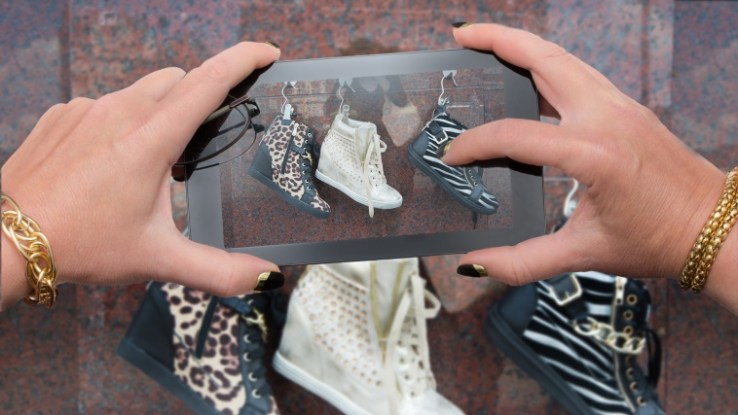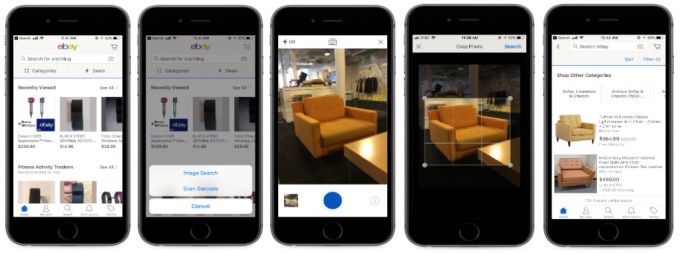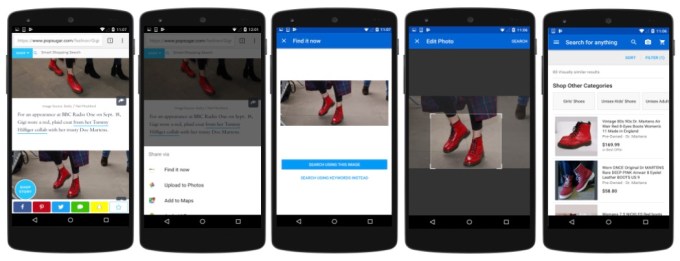eBay launches visual search tools that let you shop using photos from your phone or web

eBay today is launching two new visual search tools that will allow online shoppers to use photos they snap, have saved on their phone, or even those they find while browsing the web or other social networking sites, in order to find matching products from eBay’s catalog. The tools, Image Search and Find it on eBay, leverage advancements in computer vision and deep learning, including the use of neural networks, the company notes.
These tools were originally announced this July, with plans to launch in the fall.
The first tool, Image Search, allows mobile consumers to take a photo of something they want to buy or use an image saved to their phone’s Camera Roll in order to shop eBay. The website will then return listings of items that are either a close match or at least visually similar to the product you’ve photographed.

While other sites, including Amazon, Pinterest, retailers like Wayfair, and even Google, also have visual search capabilities today, eBay touted that the size of its catalog – over 1.1 billion items – and the age of its service could give it an advantage in this space. (Pinterest, however, said earlier this year its image database includes 100 billion “ideas,” but its site isn’t solely focused on products that can be shopped, as on eBay.)
“eBay is at a technological advantage due to the rich set of user-generated images and item data we’ve accumulated through the years,” Mohan Patt, VP of eBay’s Buyer Experience, said in July. “By applying machine learning technology, eBay can deliver a fast and reliable shopping experience backed by one of the world’s largest commerce data sets.”
A second tool, Find it on eBay, allows shoppers to start their search on any social platform or while browsing the web -like reading a favorite blog or website, for example. They can then “share” an image they find with eBay, and the mobile app will surface similar listings.

The company explains it’s using two core parts of artificial intelligence – computer vision and deep learning – to power these new features. When images are uploaded to eBay, it uses a deep learning model called a convolutional neural network to process the images. The images are compared to the site’s live listings, ranked based on visual similarity, then returned quickly using eBay’s open-source Kubernetes platform.
Although visual search is a trendy new way to shop online, its overall usefulness remains unproven in the long run. Retailers aren’t releasing stats about how many image searches have actually translated into sales, and arguably, the results can be hit or miss.
One of the problems is that when you’re looking at a fashion item in a photo, many times you want to find something just like it – not something only “visually similar.”
That is, there are times you just want a small, red handbag with a gold chain and any ol’ handbag of this nature will do; then there are times when you want the exact handbag you’re frothing over right now, or something nearly identical.
Shoppers are also often interested in the brand and quality of the goods they’re examining. And while it’s true that a pair of $10 sunglasses may look “similar” to the $200 ones in your photo, that doesn’t mean you want to buy them.
eBay says Find It on eBay is live now on Android, and Image Search is live today on both Android and iOS.